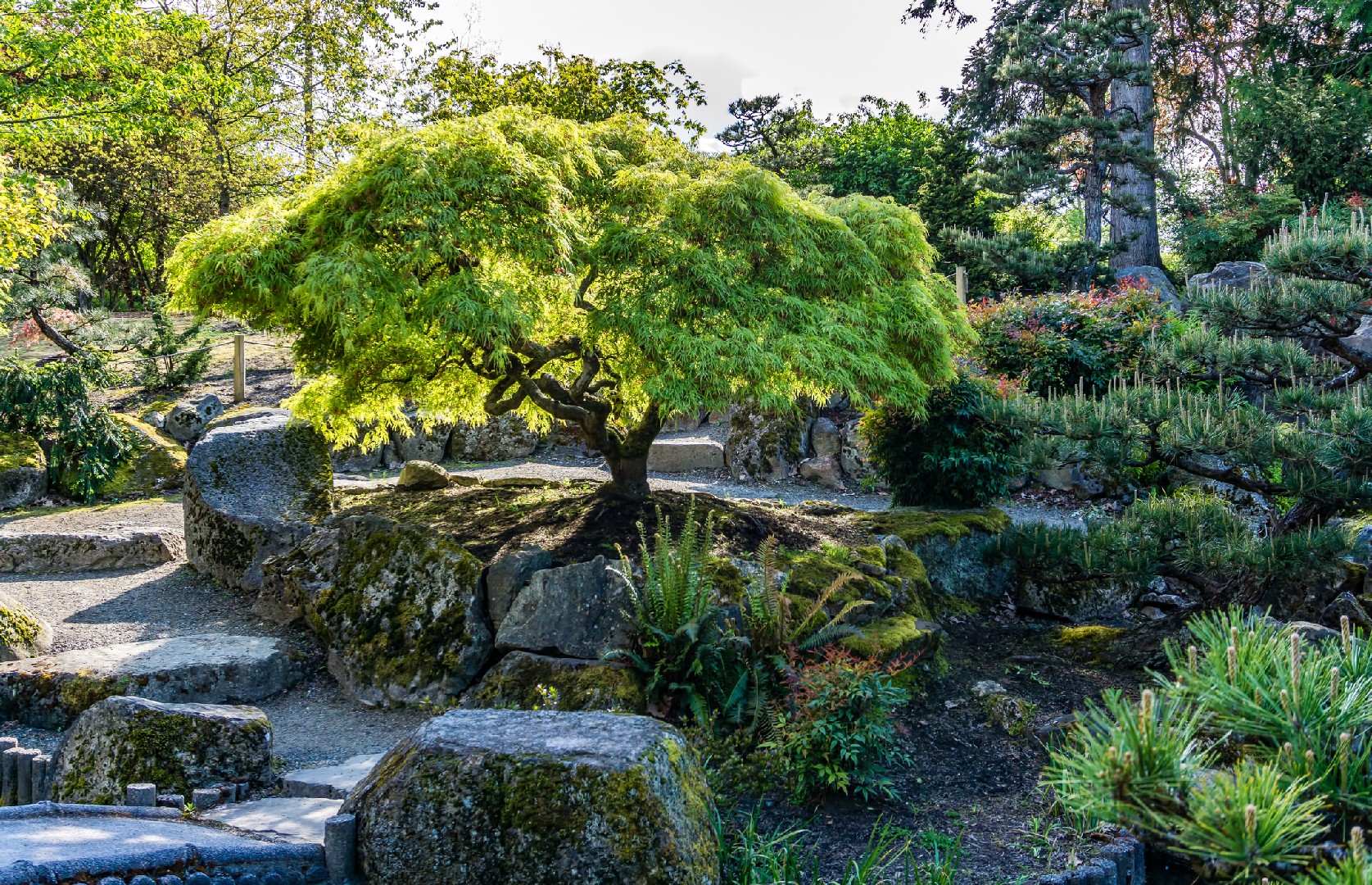![Rectangle]()
Principle #1: Miniaturization – The Art of Perspective
Japanese gardens are renowned for their meticulous design and attention to detail. At the heart of these exquisite landscapes lies the principle of miniaturization, which is the art of creating a sense of perspective within a confined space. This technique plays a vital role in Japanese garden design, allowing for the creation of harmonious and serene environments. In this section, we will explore the purpose of miniaturization, techniques for effectively utilizing perspective, and real-world examples that demonstrate its success in Japanese garden design.
Miniaturization serves as a means to simulate a larger landscape within a compact area. By carefully selecting and arranging elements such as rocks, plants, and water features, designers create the illusion of a vast natural environment. This technique not only adds visual interest but also encourages visitors to engage their imaginations and experience a sense of tranquility.
One technique commonly used in miniaturization is the art of trompe-l'oeil, which involves the use of carefully placed objects to deceive the eye. For example, a small rock positioned in the foreground can appear larger when contrasted with a distant, smaller object. This clever manipulation of perspective enhances the feeling of depth and dimension within the garden.
To create an effective sense of perspective, garden designers also employ the use of different levels. By incorporating varying heights, such as steps or small hills, they create visual interest and give the impression of multiple planes within the garden. This technique not only adds depth but also provides an opportunity for visitors to explore the garden from different viewpoints.
Let's now explore some real-world examples of successful miniaturization in Japanese garden design. The Ryoanji Temple in Kyoto is renowned for its Zen rock garden, which exemplifies the art of perspective through its simplistic yet impactful design. The carefully arranged rocks and white gravel create a vast space, inviting contemplation and meditation.
Another example is the Kenroku-en Garden in Kanazawa. This garden features a miniature mountain range created with strategically placed rocks and trees. The varying heights and slopes give the illusion of a grand landscape, evoking a sense of awe and wonder.
In conclusion, miniaturization is a fundamental principle of Japanese garden design that allows for the creation of captivating landscapes within limited spaces. By utilizing techniques such as trompe-l'oeil and incorporating different levels, designers can effectively simulate perspective and depth. Real-world examples, such as the Ryoanji Temple and Kenroku-en Garden, demonstrate the incredible impact of miniaturization in creating serene and visually stimulating environments. Whether you are a gardener, landscape designer, or simply someone who appreciates beauty and tranquility, understanding and applying the principle of miniaturization will undoubtedly enhance your experience with Japanese gardens.





